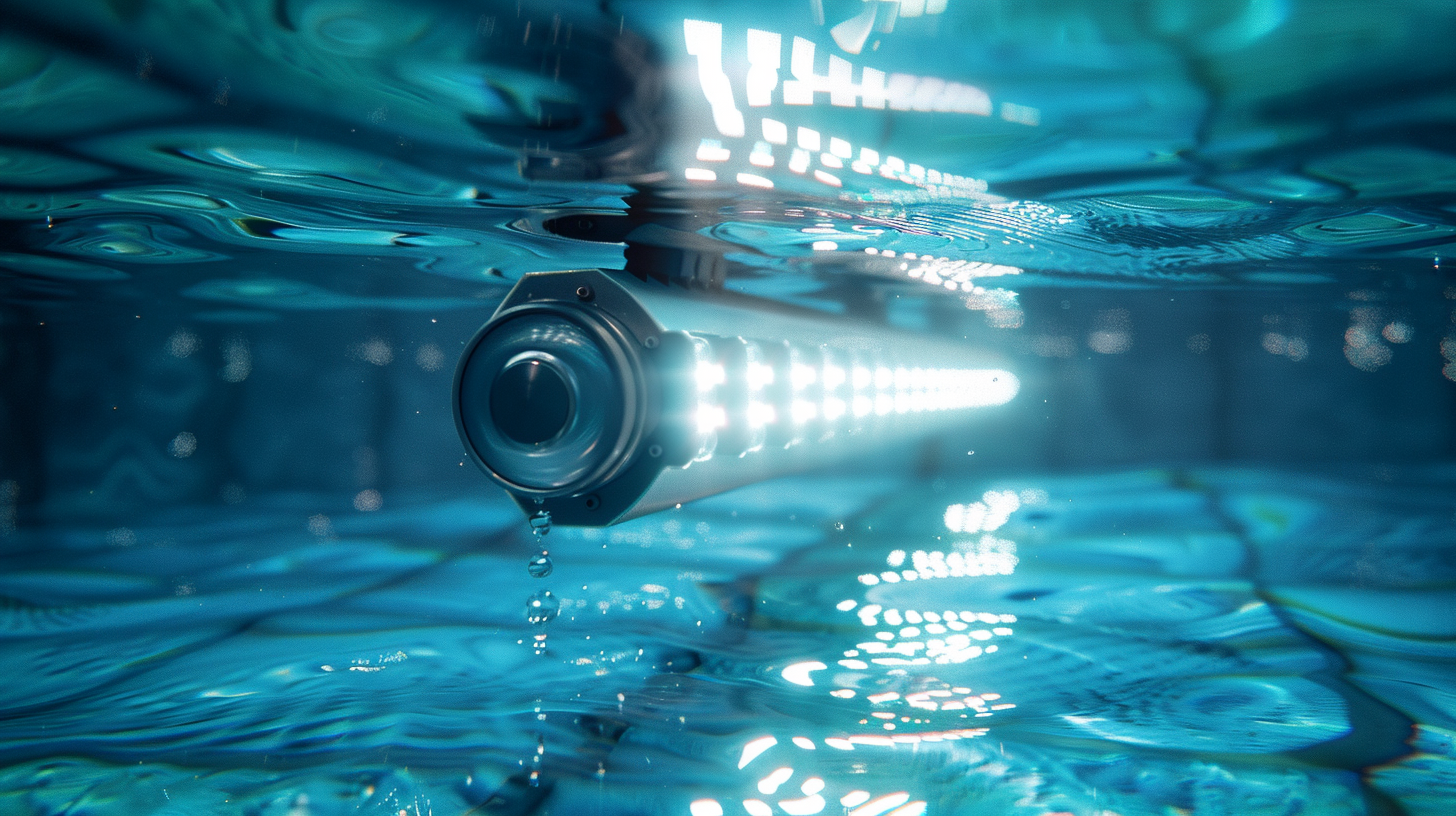The importance of voltage compatibility in underwater pool lights
Understanding the significance of voltage compatibility in pool lights can transform your poolside experience, making it safer and more enjoyable. But before diving deeper, let’s first grasp what voltage really means in the context of pool lighting. Voltage is essentially the electrical force that drives the current through your pool lights. Think of it as the pressure pushing water through a hose; without the right pressure, you either won’t get enough water or you might burst the hose. Similarly, pool lights require a specific voltage to operate efficiently and safely.
When choosing pool lights, knowing the proper voltage is crucial. Common voltage ratings for pool lighting include 12V, 24V, and 120V. Each of these serves different purposes and is suited for varied types of pools and environments. The importance of adhering to the recommended voltage cannot be overstated, as it not only affects the functionality of the lights but also plays a critical role in ensuring the safety of everyone enjoying the pool.
Moreover, understanding voltage compatibility is not just about plugging the right light into the socket; it’s also about ensuring that the entire electrical system around the pool is designed to handle this voltage. An incompatible voltage can result in poor lighting performance, frequent bulb replacements, and even dangerous situations such as electrical shocks or fires.
Risks of incompatible voltage
The risks associated with incompatible voltage in underwater pool lights are both numerous and severe. First and foremost, using pool lights that are not designed for your system’s voltage can create significant electrical hazards. Imagine a 120V light being used in a system meant for 12V. The electrical disparity can lead to overheating, which might result in the insulation around the wiring breaking down. This degradation can then expose wires, increasing the risk of electrical shocks. Given the presence of water, which is a perfect conductor, the consequences could be life-threatening.
Another risk is the potential for fire. Overheating due to voltage incompatibility doesn’t just stop at damaged wires; it can escalate to the point where surrounding materials – such as poolside decking or other installations – catch fire. The potential for property damage and personal harm is immense. This is why voltage compatibility cannot be overstated when installing pool lights. The last thing anyone wants is a relaxing poolside evening turning into a frantic call to emergency services.
Furthermore, incompatible voltage leads to premature bulb failure. Lamps designed to operate at a lower voltage can easily get fried when subjected to higher voltages, resulting in frequent replacements. This is not just an inconvenience; the costs can add up quickly. Not to mention, the frustration of having to frequently replace pool lights can detract from the overall enjoyment and aesthetics of your pool area.
Poor lighting performance is another significant risk. Lights that aren’t receiving the proper voltage may flicker, dim, or fail to illuminate sections of your pool adequately. This can create uneven lighting, making certain areas darker and potentially less safe. Proper visibility in and around the water is crucial for ensuring that swimmers can see clearly and avoid accidents. Voltage compatibility plays a critical role in maintaining the functional integrity of your pool’s lighting.
The importance of voltage compatibility extends to the maintenance of the overall electrical system as well. An electrically stressed system due to voltage inconsistencies can eventually lead to malfunctioning pool equipment. Pumps, filters, and other poolside electrical devices all rely on a stable electrical supply. Disruptions caused by voltage issues in your pool lights can cascade, affecting the entire system and leading to expensive repairs or replacements.
In sum, the risks associated with incompatible voltage in pool lights encompass not just operational inefficiencies but significant safety hazards as well. Understanding and ensuring voltage compatibility is fundamental to the longevity and safety of both the lighting and the people enjoying the pool. Paying attention to these details can save significant time, money, and possibly lives, underscoring the critical importance of getting this aspect of your pool setup spot on.
Benefits of proper voltage matching
When it comes to the benefits of proper voltage matching in underwater pool lights, the advantages extend far beyond just avoiding mishaps. One of the primary advantages is the significant increase in energy efficiency. Proper voltage compatibility ensures that your pool lights operate at their optimal performance level, consuming the appropriate amount of energy. This means you get the maximum brightness and longevity from your bulbs while keeping your electricity bills in check. Imagine enjoying a brightly lit pool without worrying about sky-high energy costs.
Another noteworthy benefit is the enhancement in the lifespan of your pool lights and the associated electrical equipment. When the voltage is correctly matched, the internal components of the light fixtures experience less strain, leading to fewer malfunctions and breakdowns. This indirectly reduces the frequency of maintenance and replacements, saving you not only money but also the hassle of dealing with constant repairs. Reliability in your pool lighting setup makes for fewer interruptions and a more enjoyable pool experience.
Proper voltage matching improves the visual aesthetics of your pool area. Consistent and bright illumination accentuates the water, making it shimmer beautifully and creating an inviting atmosphere. Whether it’s for an evening swim, a weekend pool party, or simply relaxing by the water, well-matched pool lights contribute to the ambiance, setting the perfect mood. It’s like transforming your backyard into a private resort with just the right lighting.
Safety is another crucial factor elevated by proper voltage compatibility. Consistent lighting ensures that the entire pool area is well-lit, minimizing the risks of accidents. Imagine the peace of mind in knowing that every corner of your pool is visible and safe for swimmers, particularly children or less experienced swimmers. Clear visibility helps in identifying any potential hazards quickly, thereby preventing mishaps before they happen.
Additionally, properly matched voltage extends its benefits to the overall electrical system of your pool. When pool lights operate within their designed voltage range, the stress on the circuit system is minimized. This not only promotes the longevity of your lighting but also other electrical components, like pumps and filters, ensuring the entire pool system functions smoothly. A harmonious electrical setup translates to fewer technical issues and prolonged service life of your pool equipment.
The benefits of correct voltage compatibility also manifest in operational dependability. When your pool lighting system is optimized for the designated voltage, it offers consistent and unwavering performance. This means no more flickering lights or sudden outages, allowing you to enjoy your pool without disruptions. Consistent performance also means fewer unexpected expenses due to urgent repairs or replacements, thus providing both financial and emotional reassurance.
Proper voltage matching in pool lights leads to better energy efficiency, longer lifespan of lights and equipment, improved safety and aesthetics, and reduced maintenance costs. These advantages collectively enhance the overall swimming experience, making the pool a safer, more enjoyable place for everyone. The importance of voltage compatibility cannot be overstated, as it plays a crucial role in the functional and aesthetic quality of your pool environment.
How to check voltage compatibility
Ensuring the voltage compatibility of your pool lights involves a series of straightforward yet critical steps. The first step is to identify the voltage rating of your existing pool light system. You can typically find this information in the user manual or on a label attached to the light’s transformer or the light itself. If you’re unable to locate these details, consider consulting the manufacturer’s website or contacting their customer service for assistance.
Once you know the voltage rating of your existing system, the next step is to check the voltage rating of the new pool lights you intend to install. This information is usually provided on the packaging or the bulb itself. Comparing the two ratings is crucial. For example, if your current system is rated for 12V, the new lights must also be rated for 12V to ensure compatibility. Installing lights with a mismatched voltage rating can lead to the risks discussed earlier, such as overheating, electrical hazards, and poor performance.
It’s also important to test the actual voltage flowing through your pool light circuit. Over time, electrical systems can experience wear and tear, leading to voltage fluctuations. Using a multimeter, you can measure the voltage at the socket where the pool light will be installed. Here’s a simplified table to guide you through the steps:
| Step | Action |
|---|---|
| 1 | Turn off the pool light circuit at the breaker box. |
| 2 | Remove the light fixture and expose the socket terminals. |
| 3 | Set the multimeter to measure voltage (AC or DC as applicable). |
| 4 | Place the multimeter probes on the socket terminals. |
| 5 | Note the voltage reading displayed on the multimeter. |
| 6 | Ensure this reading matches the voltage rating of the new pool lights. |
If you’re not comfortable performing these steps yourself, it’s highly advisable to hire a licensed electrician. They possess the expertise to accurately measure and confirm the voltage compatibility, and to make any necessary adjustments.
Another important consideration is the type of transformer used in your pool lighting system. Low-voltage pool lights (typically 12V or 24V) require a transformer to step down the voltage from your main electrical supply (usually 120V or 240V, depending on your region). Make sure the transformer’s output matches the voltage requirements of your new pool lights. Transformers come with various output ratings, so choose one that aligns with the pool lights you’re installing.
Finally, be mindful of the wiring gauge and quality. Lower voltage systems, like 12V, often require thicker gauge wires to minimize voltage drop over long distances, ensuring that your lights receive the proper voltage. Check the manufacturer’s recommendations for wire gauge and ensure the wiring is up to standard, particularly if your pool is large or if the lights are positioned far from the transformer.
By meticulously checking voltage compatibility from the very beginning, you can safeguard against potential hazards and enjoy the full benefits of your pool lighting system. The importance of ensuring accurate voltage compatibility cannot be overemphasized, as it lays the foundation for a safe, efficient, and visually pleasing pool environment.
Expert tips for safe pool lighting installation
When it comes to installing pool lights, ensuring a safe and effective setup goes beyond just matching the voltage. One of the key practices is to always follow the manufacturer’s installation guidelines. These guidelines are typically tailored to maximize the efficiency and longevity of the lighting system while minimizing risks. Often, they will include specifics about mounting, wiring, and sealing light fixtures to prevent water ingress, which is crucial for underwater applications.
Another essential tip is to invest in quality fixtures and components. While it might be tempting to opt for cheaper alternatives, especially when faced with a long list of pool expenses, cutting corners on your lighting system can lead to higher costs down the road. High-quality fixtures not only offer better performance but also come with enhanced safety features such as improved insulation and water resistance. Always ensure that the products meet relevant safety standards and certifications.
Proper sealing and waterproofing are critical in underwater pool light installations. Seal all connections thoroughly using waterproof connectors or sealant, especially if the lights are installed in saltwater pools. Saltwater can be particularly corrosive to electrical components, and any minor lapse in sealing could lead to water ingress and potential electrical hazards. Regularly inspect these seals and replace them if any signs of wear or damage are noticed.
Ensure proper grounding and bonding of all electrical components associated with the pool lighting. Grounding and bonding are safety measures designed to prevent electrical shock by ensuring that any stray electrical current is safely directed back to the earth. The metal parts of the lighting fixtures, as well as other electrical equipment around the pool, should be bonded together and connected to a ground. This is particularly important in a wet environment like a pool area, where the chances of electrical shocks can be significantly higher.
Another expert tip is to regularly perform maintenance checks on your pool lighting system. Periodic inspections can help identify any potential issues before they escalate into larger problems. Check for signs of wear and tear, such as frayed wires, dimming lights, or increased heat around the fixtures. Addressing these issues early can prevent electrical hazards and extend the lifespan of your pool lights.
Using energy-efficient lighting options is also highly recommended. LED pool lights have become increasingly popular due to their energy efficiency, bright illumination, and longevity. Compared to traditional incandescent lights, LEDs consume less power, generate less heat, and offer a longer operational life, which reduces the frequency and cost of replacements. They also provide better color options and lighting effects to enhance the aesthetic appeal of your pool.
Finally, if you’re ever in doubt about any aspect of your pool lighting installation, consult with a professional. Licensed electricians and pool professionals have the training and experience to ensure that your installation is done correctly and safely. They can provide valuable insights into the best practices for voltage compatibility, wiring, sealing, and maintenance, helping you achieve a secure and reliable lighting setup for your pool.
Prioritizing these expert tips in your pool lighting installation can significantly enhance both the safety and enjoyment of your pool environment. Whether it’s following the manufacturer’s guidelines, selecting quality components, ensuring proper sealing and grounding, or opting for energy-efficient options, each step plays a crucial role in maintaining the optimal performance and safety of your pool lights.


